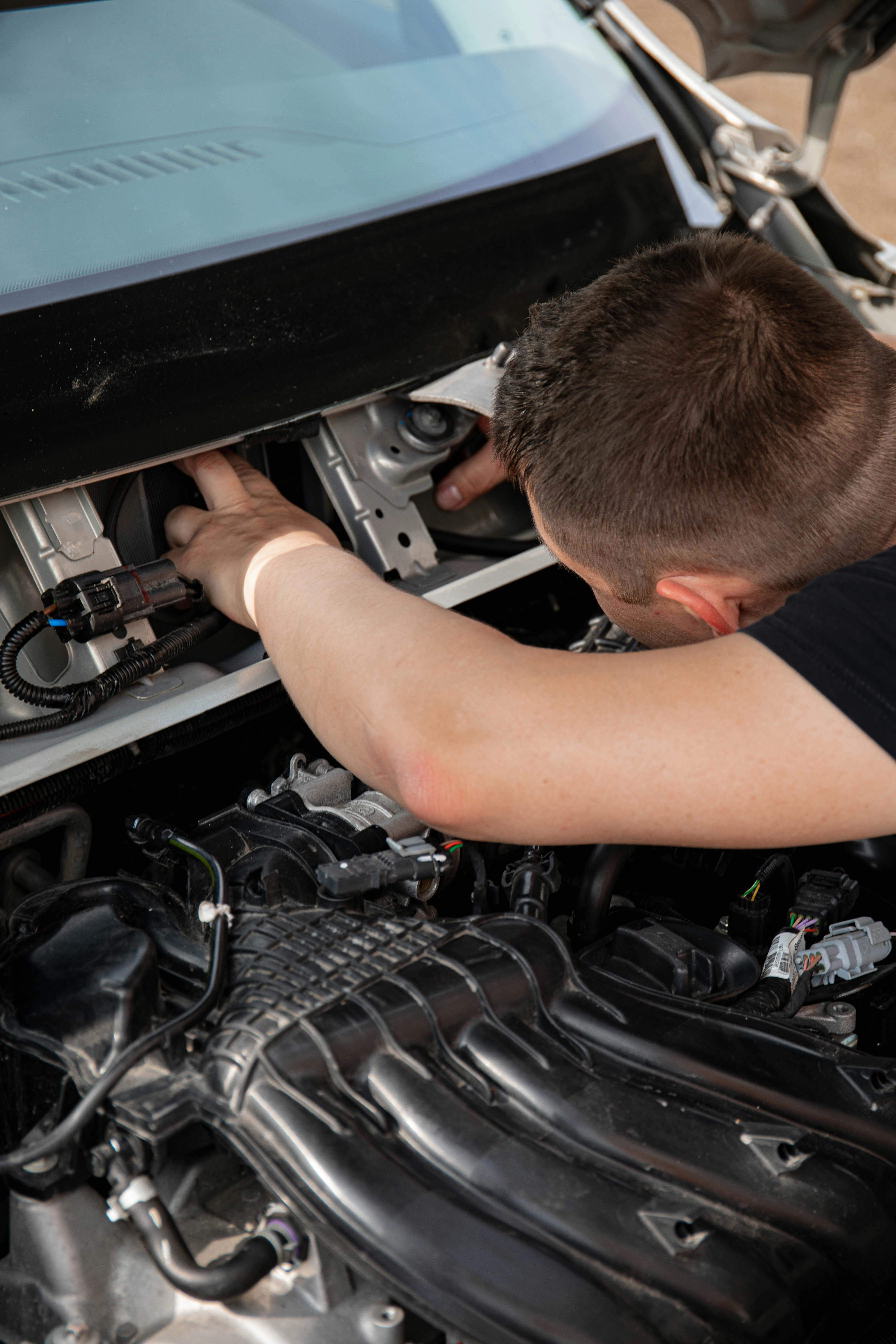Is your Windows 11 DVD drive not reading discs? You’re not alone! Many users have encountered this frustrating issue, and it can feel like a major roadblock, especially if you rely on your DVD drive for installing software, watching movies, or accessing data. In this article, we’ll dive into some quick fixes that can help you get your DVD drive back in action. Whether it’s a driver issue, a hardware problem, or a simple setting that needs adjustment, we’ve got you covered.
Understanding why your Windows 11 DVD drive isn’t reading can save you time and hassle. First, check if your DVD drive is recognized by your system. Sometimes, a simple restart or a driver update can do wonders. If you’ve recently upgraded to Windows 11, it might be that your current drivers are outdated or incompatible. This can lead to all sorts of issues, including your DVD drive not functioning properly. With a few straightforward troubleshooting methods, you can quickly identify and resolve these problems without needing to call in tech support.
Another reason for the Windows 11 DVD drive not reading could be related to the discs themselves. Are you using scratched or damaged DVDs? Or could it be a compatibility issue? Understanding these factors is crucial. In the following sections, we’ll explore the best practices and effective solutions to ensure your DVD drive operates smoothly again. So, let’s jump into these quick fixes and get your system back on track!
7 Proven Solutions to Resolve Windows 11 DVD Drive Not Reading Issues Instantly

Are you struggling with your Windows 11 DVD drive not reading? You’re not alone. Many users encounter this frustrating issue, and it can happen for a variety of reasons. Whether it’s a hardware problem or a software glitch, there are solutions that can help. Here are 7 proven solutions to resolve Windows 11 DVD drive not reading issues instantly.
Check Physical Connections
First thing first, ensure that your DVD drive is properly connected. Sometimes, a loose connection can be the culprit. Check the following:
- Ensure the power cable is securely plugged in.
- Look at the SATA or IDE connection to the motherboard. If it’s loose, you might need to reseat it.
- Try using a different USB port if it’s an external drive.
Update Device Drivers
Outdated drivers can cause all sorts of problems, including DVD drives not being recognized. To update your drivers, follow these steps:
- Right-click the Start button and select Device Manager.
- Expand the DVD/CD-ROM drives section.
- Right-click on your DVD drive and select Update Driver.
- Choose Search automatically for updated driver software.
If you see an update available, install it and see if that fixes the issue.
Run the Hardware Troubleshooter
Windows has a built-in troubleshooter that can help identify and fix issues with hardware. Here’s how you can run it:
- Go to Settings > Update & Security > Troubleshoot.
- Click on Additional troubleshooters.
- Select Hardware and Devices, then click Run the troubleshooter.
This tool may pinpoint the problem with your DVD drive and suggest necessary fixes.
Check for Windows Updates
Sometimes, a simple Windows update can fix the problem. Check if you have pending updates by:
- Going to Settings > Update & Security.
- Click on Windows Update and check for updates.
Install any updates that are available. Afterward, restart your computer and test the DVD drive again.
Use Disk Management
Another useful tool is Disk Management. This can help you see if the drive is recognized by Windows at all. Access it by:
- Right-clicking the Start button and selecting Disk Management.
- Look for your DVD drive in the list.
If it’s there but not assigned a letter, you can right-click it and select Change Drive Letter and Paths. Assign it a letter and see if that works.
Disable Upper and Lower Filters
Sometimes, registry entries can interfere with the DVD drive functionality. Disabling upper and lower filters can often solve the issue. Here’s how:
- Press Windows + R, type “regedit,” and press Enter.
- Navigate to HKEY_LOCAL_MACHINESYSTEMCurrentControlSetControlClass.
- Look for the entry {4D36E965-E325-11CE-BFC1-08002BE10318}.
- In the right pane, find and delete the UpperFilters and LowerFilters values.
Make sure to back up the registry before making any changes.
Try a Different DVD
Sometimes the problem is not with the drive but with the DVD itself. Test a few different DVDs to see if the drive reads any of them. If it reads some but not others, the issue might be with the specific DVD.
Fixing the Windows 11 DVD drive not reading can be a hassle, but with these proven solutions, you can troubleshoot and potentially resolve the issue quickly. Each step can bring you closer to a functioning DVD drive and a smoother Windows experience. If things still don’t work out, consider reaching out to a professional for further assistance.
Why Is Your Windows 11 DVD Drive Not Recognizing Discs? Top Reasons and Fixes Revealed

Is your Windows 11 DVD drive not recognizing discs? You’re not alone. Many users face this frustrating issue, and it can stem from a variety of reasons. If your DVD drive is not reading, don’t panic. Let’s explore the top reasons and quick fixes to get your drive back in action.
Common Reasons for DVD Drive Issues
-
Dirty or Damaged Discs: Sometimes, it’s as simple as the disc itself. Scratches, dirt, or smudges can prevent the drive from reading the disc correctly. Always check your discs for any visible damage.
-
Outdated Drivers: Windows 11 relies on updated drivers to function properly. An outdated or corrupted driver can cause the DVD drive to malfunction. You can often check for updates through the Device Manager.
-
Hardware Malfunction: If your DVD drive is old or has been used extensively, it might be experiencing hardware failure. Mechanical issues can prevent it from reading discs.
-
Incorrect Settings: Sometimes, the settings in Windows 11 might be incorrectly configured. It could be that the drive is disabled or not set as the default media player.
-
File System Compatibility: Not every DVD format is supported by all drives. Ensure that the disc format is compatible with your DVD drive.
Quick Fixes to Try
If your Windows 11 DVD drive is not reading, there are several quick fixes you can try to resolve the issue:
-
Clean the Disc: Use a soft, lint-free cloth to gently wipe the disc from the center outward. Avoid circular motions.
-
Check the Connections: Make sure the DVD drive is properly connected to your computer. Sometimes, a loose connection can cause issues.
-
Update Drivers: Go to the Device Manager, find your DVD drive, and right-click to select “Update Driver.” Follow the prompts to ensure you have the latest version.
-
Change Settings: Navigate to Settings > Devices > AutoPlay. Ensure that your DVD drive is enabled and set your preferred action for DVDs.
-
Test with Different Discs: Try other DVDs to see if the issue is with a particular disc or the drive itself.
Additional Troubleshooting Steps
If the above fixes doesn’t work, consider these steps:
-
Run Windows Troubleshooter: Go to Settings > Update & Security > Troubleshoot > Additional troubleshooters. Find and run the troubleshooter for Hardware and Devices.
-
Check for Windows Updates: Sometimes, a Windows update can include fixes for hardware issues. Go to Settings > Update & Security > Windows Update, and check for updates.
-
Replace the Drive: If all else fails and your DVD drive is still not recognizing discs, it might be time to consider a replacement.
How to Prevent Future Issues
Preventing issues is always better than fixing them. Here are some proactive tips:
-
Regular Maintenance: Keep your DVDs clean and store them properly to prevent scratches.
-
Keep Drivers Updated: Make it a habit to regularly check for driver updates for all your hardware.
-
Use Quality Discs: Avoid using cheap or unbranded DVDs, as they are more likely to have compatibility issues.
In summary, if your Windows 11 DVD drive is not reading, it could be due to various factors ranging from physical damage to software settings. By following the above tips and troubleshooting steps, you can often resolve the issue without needing professional help. Remember, sometimes simple fixes are all it takes to get things working again. Don’t let a stubborn DVD drive ruin your day!
Step-by-Step Guide: How to Fix Windows 11 DVD Drive Not Reading in Minutes

If you’re using Windows 11 and find that your DVD drive isn’t reading discs, you’re not alone. This problem can be frustrating, especially when you need to access important data or watch a movie. Don’t worry, though, there are some quick fixes that can help you resolve this issue in no time. In this step-by-step guide, you’ll learn how to troubleshoot and fix your Windows 11 DVD drive not reading.
Check the Basics
Before diving into more complex solutions, you should check some basic things first.
- Ensure the DVD is Clean: Sometimes, the simplest fix is just cleaning the disc. Dust or scratches can prevent the drive from recognizing it.
- Try Different Discs: Not all DVDs are created equal. Test with another disc to see if the problem persists. If one disc works and another doesn’t, it might be the disc itself, not the drive.
- Inspect the DVD Drive: Make sure there is no visible damage or obstruction in the DVD drive.
Update or Roll Back Drivers
An outdated or corrupted driver can cause issues with your DVD drive. Here’s how to deal with it:
- Open Device Manager: Right-click on the Start button and select Device Manager.
- Locate DVD/CD-ROM drives: Expand the section and find your DVD drive.
- Update Driver: Right-click on the drive and select “Update driver.” Follow the prompts.
- Roll Back Driver: If the issue started after a recent update, you can try rolling back the driver. Right-click on the drive, select “Properties,” go to the “Driver” tab, and click “Roll Back Driver” if it’s available.
Modify Registry Settings
If updating the driver doesn’t work, you might need to tweak some registry settings. Be careful, as incorrect changes can cause other issues.
- Press Win + R: Type “regedit” and hit Enter.
- Navigate to the following path: HKEY_LOCAL_MACHINESYSTEMCurrentControlSetServicesatapi
- Create a new key: Right-click on “atapi,” select New > Key, and name it “Controller0.”
- Create a new DWORD: Right-click on “Controller0,” select New > DWORD (32-bit) Value, and name it “EnumDevice1.”
- Set Value to 1: Double-click on EnumDevice1 and set its value to 1.
Check Windows Services
Sometimes, the problem is related to services that aren’t running properly.
- Open Services: Press Win + R, type “services.msc,” and hit Enter.
- Find IMAPI CD-Burning COM Service: Make sure it’s running. If not, right-click and select “Start.”
Use the Troubleshooter
Windows 11 has built-in troubleshooters that can help identify and fix issues automatically.
- Go to Settings: Press Win + I to open Settings.
- Navigate to Update & Security > Troubleshoot > Additional troubleshooters.
- Select Hardware and Devices: Run the troubleshooter and follow the prompts.
Consider Hardware Issues
If none of the above fixes work, it might be time to consider hardware problems.
- Test on Another Computer: If possible, connect the DVD drive to another machine. If it doesn’t work there either, the drive might be faulty.
- Replace the Drive: If the drive is indeed broken, you’ll need to replace it.
Addressing a non-reading DVD drive on Windows 11 can seem daunting, but with these methods, you can troubleshoot the issue effectively. Remember to take your time, and if one solution doesn’t work, try another. Each step is aimed to help you get your DVD drive back in action. Don’t let a simple problem ruin your day!
Troubleshooting Tips: Common Problems with Windows 11 DVD Drives and How to Fix Them

If you’re using Windows 11 and find your DVD drive not reading discs, you’re not alone. Many users encounter issues with their DVD drives, which can be frustrating. But don’t worry! There’s several troubleshooting tips that can help you resolve these common problems. Let’s dive into these solutions and see if we can get that DVD drive working again.
Common Reasons Why Windows 11 DVD Drives Fail to Read
First off, it’s important to understand why a DVD drive might not be reading. Here’s a list of common issues that can cause this problem:
- Dirty or Damaged Discs: Scratches, fingerprints, or dirt on the disc can prevent it from being read.
- Outdated or Corrupted Drivers: If your DVD drive drivers are not updated, it might lead to reading issues.
- Incorrect Drive Settings: Sometimes, settings within Windows can prevent the drive from functioning properly.
- Hardware Malfunctions: There could be physical issues with the DVD drive itself.
Quick Fixes for Windows 11 DVD Drive Not Reading
Now that we know what might be going wrong, let’s look at some quick fixes. These steps can be done with minimal technical knowledge.
-
Clean the Disc: Use a soft, lint-free cloth to wipe the disc from the center outward. Avoid circular motions which can cause more scratches.
-
Check for Driver Updates:
- Open Device Manager by right-clicking on the Start button.
- Find “DVD/CD-ROM drives” and expand the section.
- Right-click on your DVD drive and select “Update driver”.
- Choose “Search automatically for updated driver software”.
-
Change the Drive Letter:
- Sometimes changing the drive letter can help.
- Open Disk Management by right-clicking on the Start button and selecting “Disk Management”.
- Right-click on your DVD drive and select “Change Drive Letter and Paths”.
- Assign it a new letter and see if it works.
-
Run the Hardware Troubleshooter:
- Go to Settings > Update & Security > Troubleshoot.
- Click on “Additional troubleshooters” and select “Hardware and Devices”.
- Run the troubleshooter and follow the on-screen instructions.
-
Check for Windows Updates:
- Keeping Windows updated can solve many problems.
- Go to Settings > Update & Security > Windows Update.
- Check for updates and install them if there are any.
Additional Tips for DVD Drive Issues
Sometimes those solutions alone might not work, so here are some additional tips you can try:
- Test with Different Discs: Use various DVDs to see if the problem is with the drive or just a specific disc.
- Try a Different Computer: If possible, test your DVD drive in another computer. This can help identify if the issue is with the drive itself or your Windows 11 system.
- Reinstall the DVD Drive:
- In Device Manager, right-click your DVD drive and choose “Uninstall device”.
- Restart your computer, and Windows should automatically reinstall the driver.
When to Seek Professional Help
If none of these solutions work, it may be time to consider professional help. Hardware issues may require a technician to diagnose and repair. Also, if your DVD drive is older, it might be worth considering upgrading to a new one.
Having a DVD drive that won’t read can be a hassle, especially when you want to enjoy your favorite movies or access important files. By following these troubleshooting tips, you can often fix the problem quickly and get back to what you were doing. Don’t forget that keeping your system and drivers updated is crucial for preventing future issues.
Expert Insights: What to Do When Your Windows 11 DVD Drive Won’t Read Discs – Quick Fixes and More!

If you’ve recently upgraded to Windows 11 and find that your DVD drive not reading discs, you’re not alone. Many users experience this frustrating issue, and it can happen for a variety of reasons. Maybe you’re trying to play a favorite movie, install software, or retrieve important files, and suddenly your DVD drive just won’t cooperate. Fret not! Here are some expert insights and quick fixes to get your DVD drive back in working order.
Common Causes of DVD Drive Issues
Understanding why your Windows 11 DVD drive not reading can help you troubleshoot effectively. Here some common causes:
- Driver Issues: Outdated or corrupt drivers often lead to recognition problems.
- Disc Damage: Scratches or dirt on the disc surface can prevent proper reading.
- Faulty Hardware: Sometimes, the drive itself could be malfunctioning.
- Windows Settings: Configuration settings might be blocking the drive’s functionality.
Quick Fixes for Your DVD Drive
Here are some practical solutions you can try to resolve the issue with your DVD drive:
-
Check the Disc: Inspect your disc for scratches or dirt. Clean it gently with a soft cloth. If the disc is damaged, it may not be read.
-
Update Drivers: Go to the Device Manager by right-clicking the Start button, then selecting Device Manager. Expand the “DVD/CD-ROM drives” section, right-click your drive, and select “Update driver.” Follow the prompts to search for updated drivers.
-
Restart the Computer: Sometimes a simple restart can solve many issues, including drive recognition problems.
-
Run the Hardware and Devices Troubleshooter: Go to Settings > System > Troubleshoot > Other troubleshooters. Find and run the Hardware and Devices troubleshooter. This can automatically detect and fix problems.
-
Change Power Management Settings: In Device Manager, find your DVD drive, right-click and select Properties. Under the Power Management tab, uncheck “Allow the computer to turn off this device to save power.” Click OK.
-
Check BIOS Settings: Restart your computer and enter BIOS setup. Ensure that the DVD drive is enabled. Sometimes, it can be disabled by default.
Advanced Solutions
If the quick fixes don’t work, you might need to dig a little deeper. Here some advanced solutions:
-
Reinstall the DVD Drive: In Device Manager, right-click your DVD drive and select “Uninstall device.” Restart your computer, and Windows should automatically reinstall the driver.
-
Use Third-Party Software: There are many tools available to help read discs that Windows might not recognize. Programs like VLC Media Player can often read damaged discs.
-
Check for Windows Updates: Ensure your Windows 11 is fully updated. Go to Settings > Windows Update and check for updates. Sometimes, the latest updates can fix underlying issues.
When to Seek Professional Help
If your DVD drive still not reading discs after trying these fixes, it might be worth consulting a professional. Hardware issues can be tricky to diagnose and might require expert tools and knowledge.
Final Thoughts
A non-functioning DVD drive in Windows 11 can be a major hassle, especially when you want to enjoy some media or install critical programs. Knowing the common causes and having a list of quick fixes can save you time and frustration. Whether you’re cleaning a disc or updating drivers, you have options to troubleshoot effectively. Don’t let a simple issue ruin your experience with Windows 11.
Conclusion
In conclusion, addressing the issue of a DVD drive not reading on Windows 11 can be tackled through various effective methods. We explored potential causes such as outdated drivers, hardware malfunctions, and incorrect settings, emphasizing the importance of keeping your system updated and ensuring proper connections. Solutions included checking device status in the Device Manager, updating drivers, and even utilizing built-in troubleshooting tools. Additionally, we discussed the value of third-party software for those experiencing persistent issues. If you find your DVD drive still unresponsive despite these efforts, it may be time to consider hardware repairs or replacements. Ultimately, understanding and troubleshooting your DVD drive can enhance your overall experience with Windows 11. Don’t hesitate to implement these strategies and keep your system running smoothly. If the problem persists, seeking professional assistance might be your best course of action to ensure your device functions optimally.

